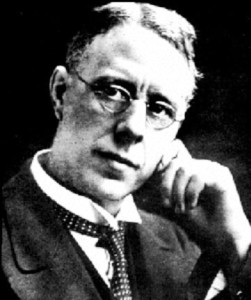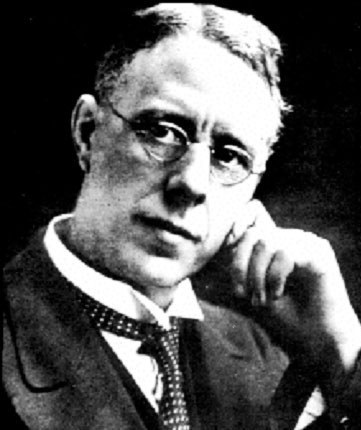 Proseguendo l’analogia con James Bond, Harry Brearley, potrebbe essere avvicinato alla figura di M, direttore del Secret Intelligence Service e capo della famosa spia inglese, un uomo altrettanto di valore e il primo a credere nelle sue capacità e ad affidargli una prima “missione” che lo rese famoso in tutto il mondo.
Proseguendo l’analogia con James Bond, Harry Brearley, potrebbe essere avvicinato alla figura di M, direttore del Secret Intelligence Service e capo della famosa spia inglese, un uomo altrettanto di valore e il primo a credere nelle sue capacità e ad affidargli una prima “missione” che lo rese famoso in tutto il mondo.
Pur non essendo avvolta dal mistero, la vita del padre dell’inossidabile non è priva di aspetti letterari.
Vi potrà sembrare un romanzo, una finzione, invece, questa storia di riscatto, ribellione, studio, determinazione e dedizione, è accaduta davvero.[1]
Il nostro racconto inizia a Sheffield che già nel XIV secolo era nota per la produzione di coltelli e nell’Ottocento divenne una Steel City. Oggi Sheffield, che pur rimane uno tra i più importanti poli mondiali di produzione dell’acciaio, è una città verde, che conta più di 200 parchi e vanta il più alto rapporto tra alberi e abitanti in Europa.
Durante la Rivoluzione Industriale, però, a svettare erano le ciminiere delle fabbriche, mentre i quartieri operai sembravano avvilupparsi uno sopra l’altro. In questa città di mattoni rossi e fumo grigio, il 12 febbraio 1871, in una famiglia operaia molto numerosa e molto povera, in una piccola casa senza sedie a sufficienza per tutti, nacque Harry Brearley.
La sua grande passione erano le officine meccaniche che incontrava sulla strada che lo portava a scuola: i suoi grandi occhi scuri si illuminavano di fronte all’incanto e al trambusto di quei luoghi indaffarati. Ogni giorno trascorreva ore intere ad osservare i fabbri e gli operai forgiare lame e oggetti vari, cosicché, come disse anni più tardi, non restava più spazio nella sua mente per le nozioni scolastiche. Aveva solo 11 anni quando decise di abbandonare gli studi e farsi assumere come manovale dall’acciaieria Thomas Firth&Sons di Sheffield, la stessa azienda per cui lavorava il padre, operario siderurgico. L’anno seguente divenne addetto alle pulizie del laboratorio e qui, in un ambiente colto e stimolante, incontrò la Scienza e si appassionò di matematica e chimica. Per Harry divenne importante capire i perché dei fenomeni che osservava al microscopio e riuscire a determinarne gli esiti. Riprese, quindi, a studiare e frequentò le scuole serali.
Harry aveva una tempra inossidabile, proprio come il suo acciaio. Era un uomo capace di nutrire grandi passioni, difficilmente demordeva e, se convinto della bontà di qualcosa, agiva senza troppe esitazioni, come quando una mattina del 1895, all’insaputa di tutti, portò la sua amata Nellie all’ufficio cittadino è la sposò. Non avevano che 5 sterline a disposizione, e per i primi mesi dovettero arrangiarsi con pane, cipolle e torte di mele, ma di amore e di fiducia reciproca non erano mai a corto, e così dopo un paio di anni nacque Leo, il loro unico figlio.
Sarà questa natura ottimista e determinata a guidarlo verso il suo più grande successo, soprattutto quando i vertici dell’azienda per cui lavorava non credettero nella sua scoperta.
Poco tempo trascorse perché Harry diventasse prima un bravo assistente di laboratorio, poi un analista e infine un ricercatore chimico. Lasciò la T. Firth&Sons per un’offerta migliore nel 1901, ma vi ritornò pochi anni dopo (1903-1904) per lavorare nei laboratori russi dell’azienda, dove si mise in mostra anche per le sue qualità manageriali. Nel 1907, ritornato a Sheffield, ottenne la direzione del nuovo dipartimento di ricerca Brown Firth Laboratories ed avendo già alle spalle una notevole fama come consulente, riuscì a trattare le condizioni del suo contratto per non perdere i diritti sulle nuove scoperte.
Fu in questi laboratori che sviluppò l’acciaio inossidabile martensitico per cui è ricordato: con il 12.8% di Cromo e solamente lo 0.24% di Carbonio.
Harry rassegnò le dimissioni nel 1915 e sarà il suo successore William Hatfield a sviluppare il tipo d’inossidabile attualmente più diffuso: l’austenitico 18-8, anche noto come 304, ovvero una lega Fe-Cr, con il 18% di Cromo e l’8% di Nichel.
ENGLISH VERSION:
Continuing the analogy with James Bond, we can compare Harry Brearley with M, head of SIS, the Secret Intelligence Service, and Bond’s superior. Man of worth, Brearley was the first believing in Mr. Inox potentialities so much that he sent him on “mission” making Its famous all over the world.
Brearley life is not shrouded in mystery but is not without romantic aspects.
It could seem a romance sometimes, a fiction, but his story of redemption, rebellion, application, determination was really happened.
Our story began in Sheffield, a city already known in XIV century for knives production become Steel City in XIX century. Nowadays Sheffield is still one of the most important place in the world for steel making, but is also a “green city”, the greenest in Europe, with more than 200 parks and gardens.
During the industrial revolution, however, the chimneys tops were standing out in the sky, and workers districts grow ones over each other. In this red bricks and smog city, on 12th February 1871 in a big and poor worker family, in a small flat with no enough chairs, was born Harry Brearley.
Mechanical shops were his passion and he often stopped along the school way to watch inside them: it looks like magic for him. He spent hours every day watching blacksmiths and workers creating blade, knives and other objects. He said later that it “left no room in my mind for school lessons”. He was only 11 when he preferred work instead of studying and became a cellar lad for Thomas Firth&Sons Works in Sheffield, where his dad was employed too. The next year he became part of the chemical laboratory of the factory with the function of cleaner. He found a cultured and stimulating context that made him fond science, math and chemistry. Understanding chemical phenomena and succeed in control them became his first interest, so he gone back to school.
Harry was a “stainless” man, as his steel. He didn’t give up easily and when convinced of something he was a little impulsive, such as the morning in 1895 when he married his beloved Nellie at the register office without anyone knowing. They had no more than 5 pounds together and at the beginning they lived of bread, onions and apple pies, but love and faith didn’t miss so two years later they had a baby, Leo.
His optimism and determination led him to his major success, especially when the Head of the factory he worked for did not believe in his discovery.
It took little time before Harry became firstly a good assistant in the chemical lab, then an analyst and, at the end, researcher. He left Thomas Firth&Sons Works for a better opportunity in 1901, but already in 1903-1904 he was back and accepted a job in Russian labs, where he showed his skills as manager.
In 1907 Harry obtained the role of director of the new researching department in Sheffield, the Brown Firth Laboratories, and because he was famous as consultant, he succeeded in having a good contract where rights for new discoveries were granted him.
In these labs he developed the martensitic stainless steel that made him famous: 12.8% of Chromium and 0.24% of Carbon.
Harry resigned in 1915 and his successor William Hatfield developed the most common stainless steel in the same laboratories: the austenitic 18-8, also named 304, an alloy of Iron and 18% of Chromium and 8% of Nickel.
[1] Le informazioni presenti in questo articolo sono state tratte da: 1913-2013. 100 years of Stainless Steel, Sheffield, a cura di Nancy Fielder per il giornale The Star, edito nel 2013; The History of Stainless Steel, Harold M. Cobb, ASM International, 2010; The Discovery of Stainless Steel, www.bssa.org.uk/about_stainless_steel.php?id=31; Harry Brearley, www.gracesguide.co.uk/Harry_Brearley.


Be First to Comment